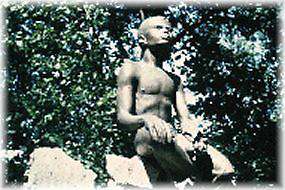George Washington Carver National Monument
category : Monuments
 George Washington Carver National Monument is administered by the National Park Service, U.S. Department of the Interior. The park consists of 210 acres of the original 240-acre Moses Carver homestead. The visitor center includes a museum with exhibits that trace George W. Carver's life from his birth through his youth at the Carver farm, to his role as an artist, educator and humanitarian, as well as his world renowned work as a scientist. The Carver Discovery Center provides interactive educational exhibits that incorporate fun and learning for children. Picnic tables are available, but camping within the park is not permitted.
George Washington Carver National Monument is administered by the National Park Service, U.S. Department of the Interior. The park consists of 210 acres of the original 240-acre Moses Carver homestead. The visitor center includes a museum with exhibits that trace George W. Carver's life from his birth through his youth at the Carver farm, to his role as an artist, educator and humanitarian, as well as his world renowned work as a scientist. The Carver Discovery Center provides interactive educational exhibits that incorporate fun and learning for children. Picnic tables are available, but camping within the park is not permitted.The 3/4-mile walking trail winds its way through the woodland and tallgrass prairie. Included at the monument are the 1881 Moses Carver dwelling and the Carver family cemetery. The Moses Carver House was built by Moses in 1881 near the birthplace cabin site and was moved to its present location by the second owner of the farm. While George never lived in the house, he did visit Moses and Susan Carver here before going to college. The Carver Cemetery is a small plot of land set aside by Moses Carver for a family cemetery shortly after the farm was established. Moses and Susan Carver are buried here, but George is buried at Tuskegee Institute. The range of ages on the tombstones reflects the perilous nature of life in the early settlement period. Other sites and features at the monument include the Carver Bust, Birthplace Site, Boyhood Statue, William's Pond, Persimmon Grove, and the Walnut Fence Row.
Carver's Boyhood Years - The Civil war brought devastation to southwest Missouri. Born on the Moses Carver farm in the early 1860s, George Washington Carver was caught up in the turmoil. Shortly after his birth, he and his mother were kidnapped by Confederate bushwhackers. He was found in Arkansas and returned to the Carvers, but his mother was never seen again. The identity of his father remains unknown, although Carver believed he was a slave on a neighboring farm. George and his brother, Jim, were reared by Moses and Susan Carver as their own children. Carver often recalled in later years the love and guidance they showed him.
Carver's imagination had room to expand on the Moses Carver farm. His frail health freed him from many daily chores, and he had time to wander, spending "day after day ... in the woods alone in order to collect my floral beauties and put them in my little garden I had hidden in brush ..." The flowers thrived under his care, and George acquired the nickname "the Plant Doctor" in his community. The rocks he collected from the woods and streams were "treasures" he kept throughout his life.
Carver's desire to understand his natural surroundings was more than a childhood fancy. He left the farm with the perceptions of a naturalist and the inquiring spirit of a scientist. Barred from the local church school at the age of 12, he moved to a nearby town to attend a school for blacks - the beginning of a 20-year struggle for an education. He never again lived with the Carvers, but many of his values and beliefs were shaped during his years with them. His contribution as a man was rooted in his ability to retain a child's wonder before nature: "My work, my life, must be in the spirit of a little child seeking only to know the truth and follow it."
Admission: Free Admission
Hours: Open Daily, 9am to 5pm; Closed Christmas, Thanksgiving, and New Years Day.
Address: 5646 Carver Rd.
Phone: 417-325-4151
Our Email: gwca_superintendent@nps.gov
Come visit us in Diamond, Missouri
